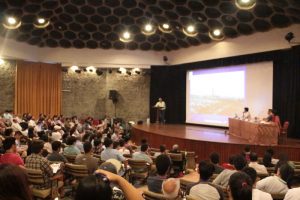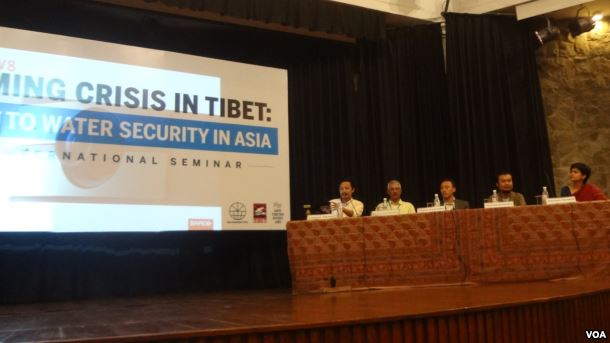
Photo: phayul
Students for a Free Tibet (SFT) India held an international seminar Damming Crisis in Tibetas part of their campaign Tibet’s Rivers, Asia’s Lifeline, to examine the growing crises resulting from both climate change and the hundreds of dams being built on Tibet’s rivers.
The seminar, which was held at the India International Centre in New Delhi on September 23and attended by more than 200 people, focused on two Tibetan rivers, the Yarlung Tsangpo, known in India as the Brahmaputra, and the Dzachu, known in South East Asia as the Mekong.
At the conference, experts urged the ten downstream nations to pressure China into signing a trans-border water sharing treaty to counter its massive damming policies.China does not have a single treaty or agreement with any neighbouring countries on water issues. According to International Rivers, an American non-profit organisation which works to protect rivers and defend the rights of communities that depend on them, today there are more than 87,000 dams in China and many of these projects have forced over 23 million people from their own homes and land. Many of these people are still suffering from the impacts of displacement.
Prof Milap Chandra Sharma, an expert on Himalayan glaciers at Jawaharlal Nehru University, Delhi, expressed concerns about the possible effects on India,”Besides having environmental issues those dams in Tibet can be disastrous for us. They can unleash their fury during earthquake, accidents or by intentional destruction can easily be used against India during war”, he said.
Tempa Gyaltsen, a research scholar based at the Tibet Policy Institute in Dharamsala, also spoke of the concerns that China could use its control over water supplies as a weapon and that this was a good reason for the downstream nations to unite to compel China to agree to a water treaty.
Tanasak Phosrikun, a Mekong River activist from Thailand, spoke of the effect the dams on the Mekong river have for people in Thailand, Laos, Myanmar, Vietnam and Cambodia.”The 4,900 km Mekong river feeds 70 million people” he said, and continued by saying that, fearing damage, China often opens its dams during heavy rains leading to flash floods causing extreme scarcity of food and life security in the lower Mekong region.
The Director of SFT-India Tenzin Tselha said that SFT aims to “build a network of civil society and environment stakeholders to collectively call for saving Tibet’s rivers”, she added, “Tibet’s rivers feed two billion people in East and South East Asia.”
This is the first SFT conference to examine the threats posed to the water supplies in downstream southeast Asia by the changing situation on the Tibetan plateau, in part caused by China’s damning of rivers there. The seminar was timed for the lead up to World Rivers Day on September 25.
SFT is a global grassroots network of people campaigning for Tibet’s independence and the fundamental rights of the Tibetan people.






 Print
Print Email
Email